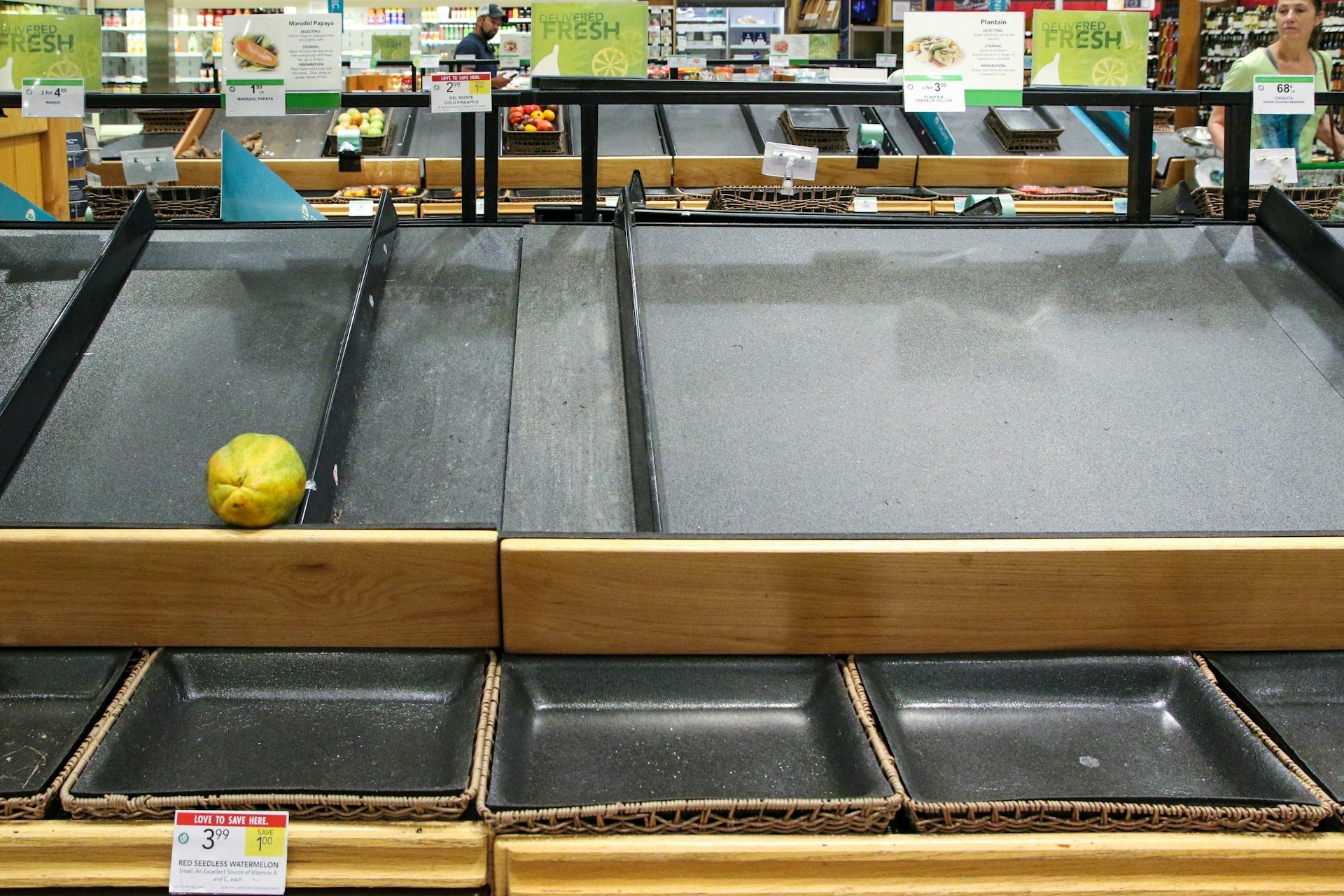Optimizing inventory management is crucial for business profitability and customer satisfaction across a range of industries.
Yet comprehending the methods to extend the shelf life of products remains a complex task.
In industries where inventory has a limited lifespan, like food or pharmaceuticals, effective management strategies can minimize waste and maximize profits.
This discussion will delve into these vital strategies, addressing the most effective and practical methods.
The aim of the information provided is to offer insights into best practices, helping businesses enhance their inventory management.
From underlying understanding to advanced techniques, this detailed exploration seeks to deliver a comprehensive understanding without being unnecessarily complex.
Contents
Inventory Management Practices For Shelf Life Extension
1. Use of First-In, First-Out (FIFO) Rule
The First-In, First-Out or FIFO rule is a principle that governs the order of using or disposing of inventory on the rationale that the first items procured or produced are the first ones to be used or sold.
It is especially practical in inventory management for goods with a limited shelf life as it helps avoid spoilage and waste.
FIFO is a universally applied method not only in businesses handling perishable goods like in grocery stores or restaurants, but also in industries that stock electronics, and in pharmaceutical companies where medicines and medicinal equipment can become outdated.
In these scenarios, FIFO is an effective way to maximize the shelf life of each product, and guarantees that no outdated or spoiled items are sold to customers.
By following the FIFO rule, businesses can ensure that their inventory is always fresh, reducing the chances of sell-by dates expiring and items becoming obsolete.
Implementing FIFO can also lead to more accurate financial readings.
When the items sold are those that were purchased or manufactured first, the costs documented in your financial reports are closer to historic costs, resulting in financial statements that accurately reflect the economic circumstances at the time the assets were purchased.
This helps businesses avoid inventory devaluation because costs recorded on financial statements are directly related to the actual cost of the stocked goods.
Another benefit of FIFO involves the product’s quality and safety.
Existing goods are not left sitting around to potentially degrade or become unsafe, and this is particularly critical in businesses dealing with food or medical supplies where expired products can have serious consequences.
However, the implementation of FIFO is not without its challenges.
It requires a well-regulated inventory system and a serious commitment to regular updating of stock and efficient stacking methods.
For instance, new stock must always be placed at the back or bottom, ensuring older stock at the front or top is sold first.
It’s crucial to point out that FIFO is not a one-size-fits-all strategy; it’s more effective under certain circumstances and industries.
You need to diligently assess whether this approach suits your inventory management policies and business models, and consider if there is a better alternative strategy.
Despite the challenges, the benefits of FIFO in preserving the shelf life of the inventory, maintaining product quality and accurately reflecting inventory costs makes it an invaluable strategy in effective inventory management.
2. Regular inventory audits and quality checks.
Proper inventory management involves more than just stocking and selling items. It includes managing the products’ shelf life and ensuring the inventory’s overall quality.
Companies can maintain a high standard of inventory quality through regular audits and quality checks.
Thorough inventory audits involve verifying the quantity and condition of the items in stock against the records in your system.
It’s a process that helps to monitor and control product degradation, detect irregularities early on, and prevent any unnecessary ice-aging stock.
This is especially important for businesses with perishable goods, as these items have a limited shelf life and require more frequent checks.
Regular inventory audits and quality checks can significantly extend the shelf life of your products.
Quality checks, on the other hand, ascertain that your products meet the necessary standards and remain in a saleable condition.
These checks are typically a part of the product reception process and are as vital at the end of a product’s lifecycle as they are at the beginning.
Quality checks help identify unsellable goods before they reach the shelf, saving you time and money in handling returns, and preventing customer dissatisfaction.
Remember, a systematic approach to inventory audits and quality checks can help maintain stock accuracy, avoid stockouts and overstock situations, keep your customers happy, and protect your company’s reputation.
Regular audits also allow you to make more informed decisions about reordering products, primarily when the quantities available do not match the quantities recorded.
Moreover, the maintenance of standard operating procedures (SOPs) for audits and quality checks can ensure consistency and efficiency in these processes.
It is also crucial to leverage modern inventory management software to streamline these tasks, reduce human errors, and provide real-time and accurate data for decision-making.
Ultimately, regular inventory audits draw attention to potential problems in your warehouse, allowing you to respond swiftly and prevent losses, while quality checks ensure that your customers always receive top-quality products from your brand.
3. Monitor and control storage conditions
One of the most integral aspects of inventory management practices for shelf life extension is monitoring and controlling storage conditions.
Proper management of storage can drastically increase the shelf life of products, ultimately leading to cost efficiency and reduced wastage.
Temperature, humidity, and light conditions must be periodically assessed and optimally controlled to ensure that products do not deteriorate or lose their functionality prematurely.
For instance, sub-optimal temperatures can cause perishable goods to spoil at a faster rate, leading to inventory loss.
Utilizing technologically advanced tools such as thermometers, hygrometers, and light meters can significantly assist in maintaining ideal storage conditions.
These tools help in providing accurate readings of environmental conditions, making it easier to detect and rectify any discrepancies swiftly.
In addition, having a systematic process for regularly checking and logging these storage conditions can ensure ongoing shelf life optimization.
An organized record-keeping can help identify patterns, recognize potential issues and provide the necessary data to make informed decisions on how to modify the storage conditions most effectively.
Digital tools like inventory management systems can also be employed to automate this process and provide real-time updates.
Such an approach not only saves time but also reduces the likelihood of human error in the monitoring process.
Companies with vast inventory may also consider implementing smart sensors that can send alerts whenever an environment variable goes beyond the set parameters.
This real-time tracking can prevent potential spoiling and unnecessary loss, maintaining high-quality standards across the supply chain.
Moreover, proper staff training on the importance of maintaining good storage conditions and on handling the tools used to monitor these conditions is equally necessary.
This ensures everyone involved understands their role and responsibilities regarding shelf life extension strategies.
For example, staff should know what to do when temperature readings are above the desired limit, or when the humidity levels are not within the recommended safe range.
Overall, a rigorous routine of monitoring and controlling storage conditions can significantly extend the shelf life of inventory and optimize the operations of any business.
4. Implement Efficient Stock Rotation Systems
Effective stock rotation systems are an integral part of inventory management practices aimed at extending the shelf life of goods.
They ensure that older items are sold first before the newer ones, preventing stock from becoming outdated and obsolete.
This strategy, otherwise known as the ‘First-In, First-Out’ (FIFO) method, is particularly beneficial for perishable items that have a limited shelf life.
Implementing FIFO does not only reduce waste but also leads to improved customer satisfaction as products are less likely to be past their prime or expire on the shelf.
With an efficient stock rotation system, it becomes easier to manage large holding inventories and maintain a streamlined product offering. It provides a mechanism to ensure that inventory does not sit on the shelf for too long, causing potential losses due to spoilage or obsolescence.
Moreover, it contributes to better inventory accuracy.
Stock rotation systems also play a critical role in food safety, ensuring that older food items are sold first, reducing the risk of foodborne illnesses.
Proper stock rotation can also prevent the growth of bacteria and pests that are attracted to older, decaying products.
In many industries, effective stock rotation is not just a best practice, it is a key regulatory requirement.
However, implementing an efficient stock rotation system can seem daunting, especially for businesses with a large range of varied products.
But with the right strategies, organizations can create a system that works best for their business needs.
For instance, using software solutions and predictive analytics to monitor and manage the inventory can make the process smooth and efficient.
Incorporating automation for routine tasks also limits the possibility of human error, further improving the accuracy and efficiency of the stock rotation system.
Additionally, businesses can provide training to their staff to ensure that they understand and implement the rules of the stock rotation effectively.
It is important to remember that every business will have different requirements and challenges related to inventory management and stock rotation.
Therefore, continuous assessment and improvement are vital to maintain an efficient stock rotation system.
5. Employ predictive analytics for inventory demand
When it comes to inventory management, one essential practice is the use of predictive analytics for inventory demand.
This involves the employment of various statistical and analytical tools to predict future inventory needs based on past sales data, seasonal trends, and market analysis.
Predictive analytics is a proactive measure that organizations can use to ensure they are prepared for consumer demand, particularly concerning products with a short shelf life.
Using this methodology enables companies to more effectively manage their stock levels, avoiding overstocking products, which may deteriorate over time, or understocking, which would lead to loss in potential sales.
Predictive analytics for inventory demand is not a straightforward task, and it relies on complex algorithms, advanced machine learning techniques, and robust data structures.
Moreover, it necessitates a robust understanding of a company’s sales patterns, seasonal influences, and any other factors that may influence consumer demand.
Often, this calls for the collaboration of departments such as sales, marketing, and operations, who work together to gather and interpret the necessary data.
By adopting predictive analytics for inventory demand, businesses can optimize their inventory to meet customer needs while reducing the risk of product obsolescence or excess stock.
Furthermore, this practice assists in reducing waste and maintaining product quality, two vital factors in managing products with a limited shelf life.
It is also worth noting that predictive analytics is not a one-size-fits-all approach.
Each business needs to tailor the approach to its specific needs, taking into account factors such as industry trends, customer buying behavior, and the particular characteristics of their products.
A well-implemented predictive analytics system can have a considerable impact on a company’s bottom line, resulting in reduced costs, increased sales, and improved customer satisfaction.
Despite the complexities involved, the return on investment in predictive analytics for inventory demand can be substantial and long-term.
In organizations operating in a competitive market with products of short shelf life, mastering the use of predictive analytics can be a key asset in maintaining competitiveness and operational efficiency.
Overall, predictive analytics for inventory demand is a crucial practice in inventory management that enables a company to extend the shelf life of its products while maximizing profitability and customer satisfaction.
The Bottom Line
Mastering inventory management is more than a mere administrative necessity.
It is a strategic and operational imperative that impacts the bottom line of every business.
Implementing practices such as the First-In, First-Out rule, undertaking regular inventory audits and quality checks, monitoring and controlling storage conditions, employing efficient stock rotation systems, and harnessing the power of predictive analytics for inventory demand forecasting can significantly enhance operational efficiency.
These best practices play a critical role in ensuring that businesses reduce wastage, improve cash flow, and remain competitive by promptly meeting customer needs.




